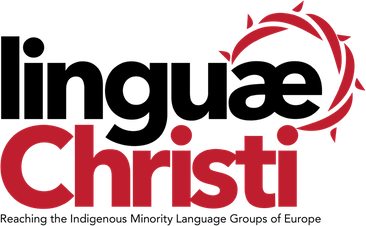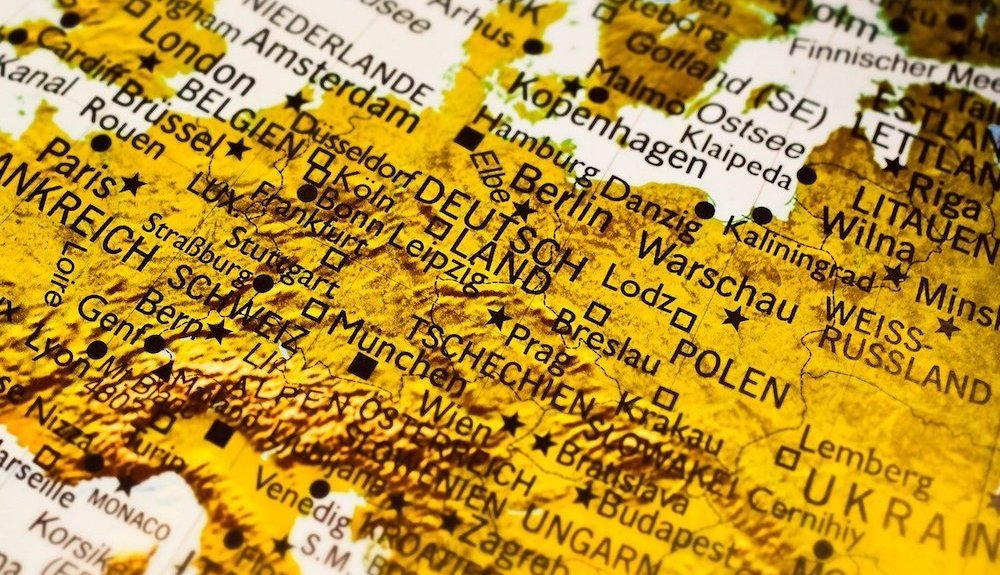In last month’s Sprachspielen, I began to unpack the use of the word “minority” related to indigenous languages in Europe and our work with them. In my last instalment, I described how the European Charter for Regional and Minority Languages (ECRML) is our primary guide for deciding what is or is not a minority/regional language, and which ones we might include in our strategic list of language groups, which are the target groups for our missions engagement as an organisation.
In this month’s instalment, I want to pick up where I left off at the end of last month’s, namely in speaking about where our strategic list of indigenous minority languages differs from those included in the ECRML.
First, I’d like to continue what I started in the last Sprachspielen by mentioning some languages that we would include as minorities that are not mentioned in the ECRML, as it stands at present.
Official languages

There are some languages that are recognised as either the national or official languages of a nation-state, which we would include in our list of minority indigenous languages. In spite of their official status, however, we would consider these languages as minority languages, because they have been made so by centuries of political, cultural, and linguistic factors, which have served to minoritise these languages as a natural consequence. A couple of examples of these minority languages would be Irish Gaelic in the Republic of Ireland and Belarusian in Belarus.
“Smaller” Nations

We also tend to include some languages as “minority” for our purposes, which are the majority and official languages of nation-states with a population of less than 500,000. Some examples of these languages that we would consider minority languages would be Icelandic in Iceland and Maltese in Malta.
“Dialects”

At some point in a future instalment of Sprachspielen, I hope to delve more deeply into this term. However, for the purposes of this point, I will say simply that often there is a difference of opinion as to whether a minority form of speech is a “language” or “dialect.” Unfortunately, often these designations of “dialect” are made for political and cultural reasons by the majority language population or legal authority as means of control by denigrating the minority language and its speakers. This happens regularly through history and into our current time, even though the linguistic evidence would indicate that the “dialect” in question is actually a language by any other consideration and with a long history of its use and strong linguistic identity. Because in the arena of international consideration, more often than not, the opinion of the majority is taken as valid and the norm, and that of the minority is suspect, marginalised or discounted. Linguæ Christi is committed to give the benefit of the doubt and also follow the linguistic and cultural evidence to identify and determine that many of these “dialects” are actually minority languages. There are dozens of examples of these languages, such as Piemontese in northwest Italy, which is often called an “Italian dialect” but actually shares far fewer linguistic features and mutual intelligibility with standard Italian than Norwegian, Danish, and Swedish share with each other, and no one would identify them as “dialects.”
Second, there is a group of languages, which would meet the basic requirements to be considered minority languages, but they would not be included in our strategic consideration for Gospel engagement. These would be the indigenous minority languages spoken in one country, which have representation as the primary and/or official language of their own nation-state, usually within close geographic proximity. We would tend not to focus on these minority languages, because they have full linguistic representation and influence as the majority language group in another country, and we would trust that mission work among their linguistic brethren in minority settings would be addressed and led by the speakers of those languages in those countries, where they are the linguistic majority. Some examples of these minority languages that would NOT be on our list for engagement would include Hungarian (spoken in areas of Slovakia and Romania), and Swedish (spoken in Finland).
Hopefully, these two instalments will help in understanding how we use the term “minority” in our ministry context. More next month.
Have you seen the full scope of the people groups we serve?
165+ people groups. 100+ million people.
We’re still working to provide basic information about all of the indigenous minority language groups of Europe, but we have some information posted now, especially where we’re actively working. Read more.

